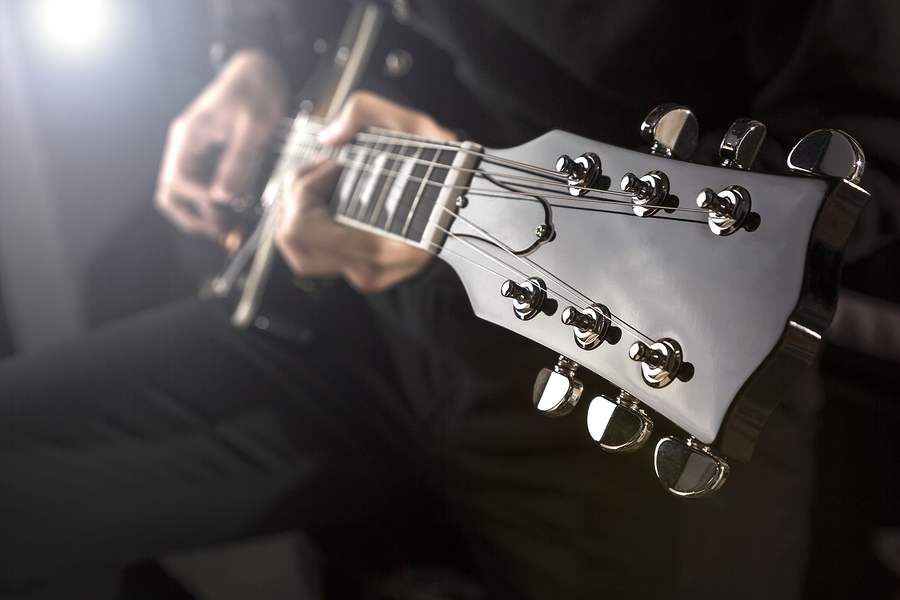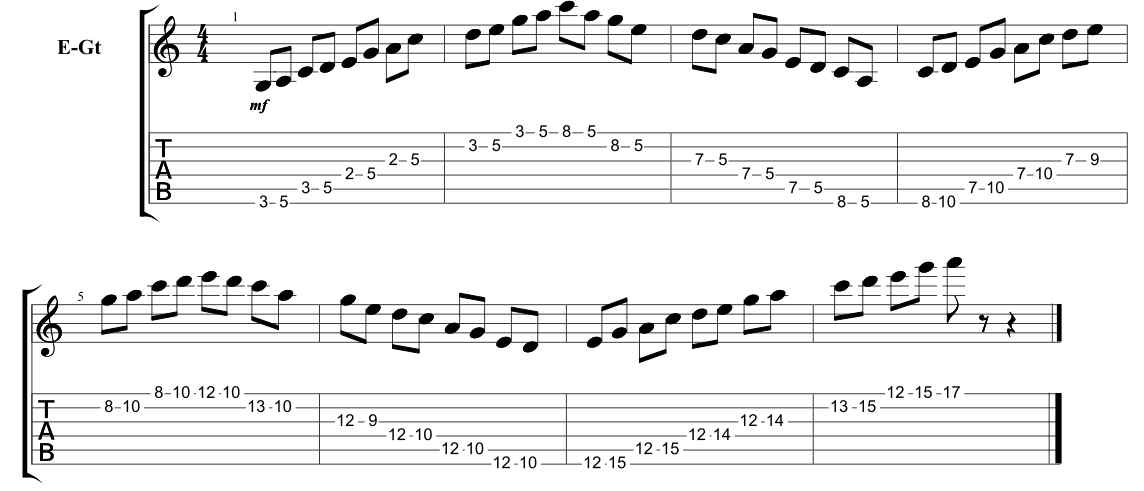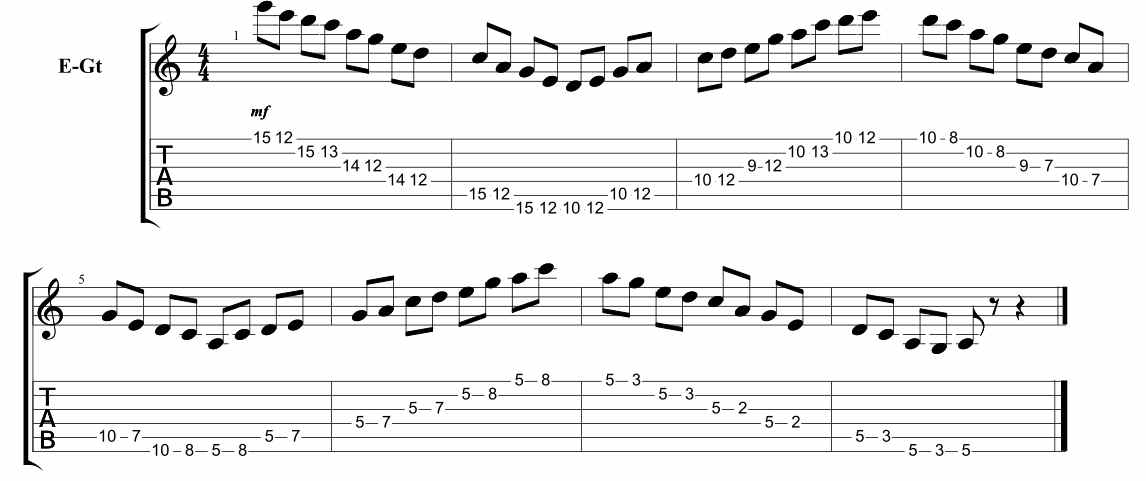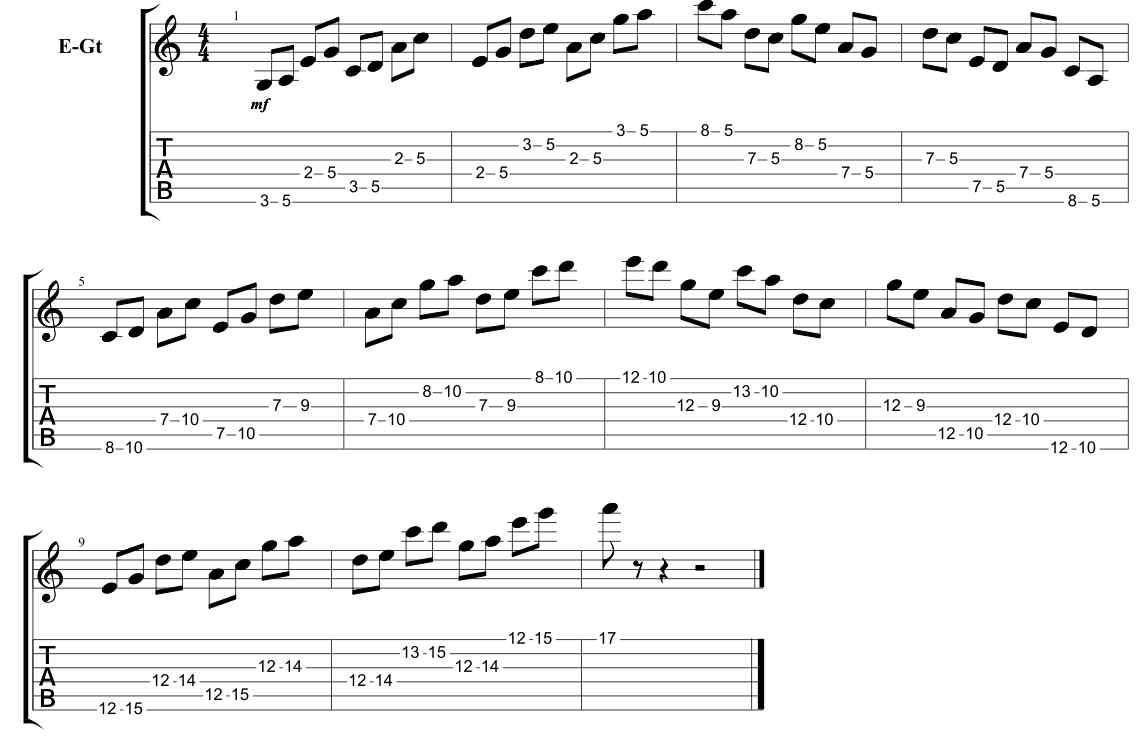May 15, 2019 by Klaus Crow
Photo by Bigstock photo
 A lot of guitar players use only one pentatonic position / shape: The first position (E shape) it’s because it’s the most comfortable shape to play in.
A lot of guitar players use only one pentatonic position / shape: The first position (E shape) it’s because it’s the most comfortable shape to play in.
That’s great if you start out with soloing, in fact it’s better to stay with that for a while to explore all the possibilities and to really be able to improvise with that one shape.
But after some time it’s good to get out that box and discover more of the world. Wouldn’t it be great to attain the freedom to use the entire fretboard for all your rock, blues, country and heavy metal soloing? It’s the next step to becoming a complete guitarist.
To expand your reach on the fretboard beyond the most popular pentatonic position #1 (E shape), you need to learn all five pentatonic positions, also known as shapes. If you haven’t learned the five pentatonic shapes yet check out: The Five Pentatonic Scale Shapes You Must Know
This post is to designed to give you some extra exercises (once you’ve learned the five shapes) to really get those shapes down.
Have fun!
Exercise #1
In this exercise you start off with position 5 (G shape) play it ascending, then position 1 (E shape) descending, position 2 (D shape) ascending, position 3 (C shape) decending and finally position 4 (A shape) ascending. Play the exercise using alternate picking (the pick goes down,up,down,up,down,etc).
Exercise #2
In this exercise you go backwards and start off with position 4 (A shape) play it descending, then position 3 (C shape) ascending, position 2 (D shape) descending, position 1 (E shape) ascending and finally position 5 (G shape) descending. Play the exercise using alternate picking (the pick goes down,up,down,up,down,etc).
Exercise #3
This is a string skipping exercise where you will need to concentrate, but makes you really aware of where the notes are in the shape.
If you want to get this stuff down seriously and master the positions/shapes inside out, learn to improvise around the entire fretboard with effective exercises, examples, cool blues licks and much more, check out: 50coolblueslicks.com




Hi Klaus sir,
As per your advice I had learnt the “pentatonic scale” from your blog.This article encourages me to get out that box and to play new things.your articles are specific and easy to follow. I’m glad that I learned to play guitar from you.
Hi Prasana,
Enjoy the exercises and keep on picking!
Best regards,
Klaus Crow
Awesome post! More like these please..!
p/s: Just realized when you posted the link to the 5 pentatonic shapes that there are treasures here which need to be dug out first (because they don’t appear under the ‘Recent Posts’ list) :)
Hi JMLara,
Thanks!
You can look through the lessons archive to find everything you need.
Maybe you also like 5 effective pentatonic exercises for building speed
Best regards,
Klaus Crow
Hi klaus sir,
I have simple questions.
Why did you choose guitar playing?
what drive kept you going?
How did you motivated yourself while tough times?
what inspired you to play guitar?
I was 9 years old when started learning to play guitar. I saw someone playing guitar on TV and that was it. I can’t remember who though.
Good music and awesome guitar players like Stevie Ray Vaughan, Joe Satriani, Scott Henderson and many others kept me motivated at all times. I wanted to play their music and learn their skills.
I never really had an issue with having to motivate myself playing guitar. The music, the guitar heros, the instrument, fellow musicians and playing in bands were motivating enough to keep me going. It’s just fun.
No matter what your level of playing is, the key is to just have fun! Practice and have fun!
Best regards,
Klaus Crow
Very helpful post! I agree most beginner guitar players tend to stick with position 1 because it’s so easy and comfortable on the left hand. However learning every position on the neck is critical. As I mentioned in another comment I like using pentatonic exercises to help my students build speed and dexterity. I take this routine as an opportunity to drill them on each pentatonic pattern. Good lesson, thanks for sharing!
klaus is there any way to print out thes shapes. the size on my IPad is too small for my old eyes
Really cool vlog, dude. What acoustic r u using in th video?
I understand positions. CAGED. That is find the corresponding note on the 6th string. But I don’t understand why it’s called shapes. Am I missing something simple?
The shapes are all wrong … the first shape is NOT the G-shape, but the A-shape.